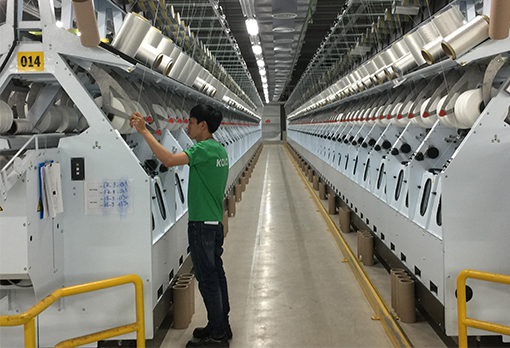
The Southern Key Economic Zone needs specially tailored policies to attract large amounts of foreign direct investment and improve linkages between localities to ensure sustainable development, experts have said.
The Southern Key Economic Zone needs specially tailored policies to attract large amounts of foreign direct investment and improve linkages between localities to ensure sustainable development, experts have said.
The zone comprises HCM City and the provinces of Bình Phước, Tây Ninh, Bình Dương, Đồng Nai, Bà Rịa-Vũng Tàu, Long An, and Tiền Giang.
 |
| The Southern Key Economic Zone plays an important role in the socio-economic development of the country. VNS Photo Văn Châu |
It attracts a lot of FDI, in fact half of the entire amount coming into the country.
It also accounts for 45 per cent of the nation’s GDP, 42 per cent of the Government’s revenues and more than 40 per cent of exports.
But its technical and social infrastructure fall short of requirements, and this kept large FDI projects (of above US$100 million) away last year, experts said.
There was only one such investment last year when Hong Kong’s Techtronic Industries invested $650 million in a project in the Saigon Hi-tech Park in HCM City.
The company’s chairman, Horst Julius Pudwill, unveiled plans to set up a plant and an R&D centre with the target of making Việt Nam the new manufacturing base.
It plans to make products for exports and set up training schools to improve the quality of the Vietnamese engineers.
It hopes its investment will be a basis for companies in its supply chain to relocate to Việt Nam.
The plant will manufacture hand-held power tools with integrated technology for designing and manufacturing control devices and electronic transformers.
It will hire more than 7,400 people, including 500 in research and development.
Bình Dương Province, which saw FDI increase by 49 per cent to US$3 billion in the first 11 months of last year, however had only one large project, a $171 million plant built by Japan’s NTT group.
Dr Dư Phước Tân, head of the HCM City Institute for Development Studies’ urban management and research division, said the zone needs huge sums of money every year to develop its road infrastructure, but does not get them from the Government.
The Ministry of Transport estimates that around VNĐ300 trillion ($12.9 billion) is needed to develop the road infrastructure.
Tân said policies for financing traffic links between the city and provinces are inadequate.
A transport development plan for the region envisages building more new expressways such as between Biên Hòa in Đồng Nai Province and Vũng Tàu in Bà Rịa-Vũng Tàu Province, between HCM City and Bình Phước Province’s Chơn Thành District through Bình Dương Province’s Thủ Dầu Một City, between Long An Province’s Bến Lức District and Đồng Nai’s Long Thành District, and between HCM City and the Mộc Bài international border gate in Tây Ninh Province.
Many waterway transport projects are expected to be added to the plan.
Solutions
With its leading role, HCM City has proposed many solutions to mobilise capital not only for itself but also the entire zone.
In 2010 it decided to establish the HCM City Financial Investment Company (HFIC).
The HFIC has attracted investment in major infrastructure projects in the city and provided credit worth VNĐ14 trillion for 131 infrastructure projects.
It has also effectively managed a large amount of funds from the city for power grid renovation, science and technology development, IT human resources development, and pollution reduction.
It has also given loans worth VNĐ2.064 trillion to social and political organisations.
Bình Dương Province hopes to attract investment by creating a conducive business environment.
It has greatly improved road infrastructure to improve connectivity with HCM City and nearby provinces, developed concentrated industrial zones and attracted workers from other provinces and cities around the country.
(Source:VNS)


